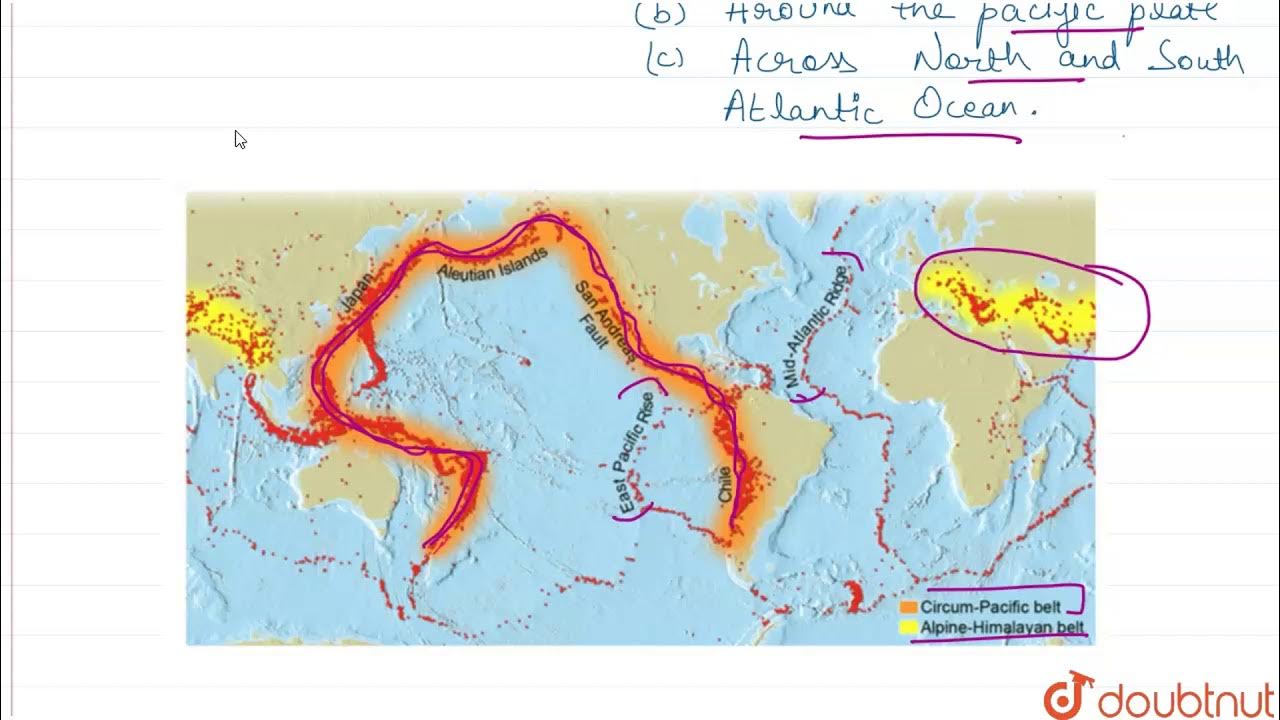Natural Hazards
Summary
TLDRThis lecture explores the impact of natural hazards, specifically volcanoes and earthquakes, through the lens of plate tectonics. It explains how plate movements lead to seismic activity and volcanic eruptions, with a focus on the 'Ring of Fire' as a hotspot for tectonic activity. The lecture delves into types of faulting, the mechanics of earthquakes, and volcanic hazards like lava flows and pyroclastic flows. It also discusses human vulnerability, the challenges of predicting these events, and the significant risks they pose, particularly in densely populated regions near active geological zones.
Takeaways
- 😀 Natural hazards like earthquakes and volcanoes are not random events; they can be explained through plate tectonics and the movement of Earth's plates.
- 🌍 The 'Ring of Fire' is a region with intense tectonic and volcanic activity, hosting 75-80% of the world's active volcanoes and a high human population.
- 💥 Earthquakes mostly occur along plate boundaries due to friction and strain at these locations, which eventually lead to the release of seismic energy.
- 🔎 The focus of an earthquake is the subsurface area where the earthquake begins, while the epicenter is the area on land directly above it.
- 📏 Earthquakes are measured with seismographs, and the Richter scale is used to determine the magnitude, though it can be misleading for larger quakes.
- 💔 Earthquakes present several hazards such as ground shaking, surface displacement, and liquefaction, with significant fatalities often occurring in developing regions.
- 🌋 Volcanoes are openings in the Earth's crust where molten rock, gases, and debris escape. 600 out of 1,300 volcanic cones are active.
- 🌱 People live near volcanoes due to fertile soil, as volcanic eruptions enrich the land with important nutrients like phosphorus and calcium.
- 🔥 Volcanoes can be formed in subduction zones, seafloor spreading areas, and hot spots, with Hawaii being a prime example of a hot spot volcano.
- 💨 There are two types of volcanic eruptions: effusive (gentle) and explosive (violent). Explosive eruptions result in significant hazards like pyroclastic flows and lahars.
- 🚨 Volcanoes are easier to predict than earthquakes. Scientists use tilt meters, gas composition analysis, and drones to monitor volcanic activity and warn populations.
Q & A
What is the connection between plate tectonics and natural hazards?
-Plate tectonics explains the movement and interaction of Earth's plates, which leads to natural hazards like earthquakes and volcanoes. Understanding plate boundaries, such as converging plates or mid-ocean ridges, helps us predict where these events are likely to occur.
What is the 'Ring of Fire' and why is it significant?
-The 'Ring of Fire' is a zone around the Pacific Ocean where a high amount of tectonic and volcanic activity takes place. It is significant because about 75-80% of the world's active volcanoes are located here, and it is home to many major cities like Los Angeles, Tokyo, and Mexico City, which face increased natural hazard risks.
What are the three types of tectonic stress that cause rock deformation?
-The three types of tectonic stress are tension (stretching of rock), compression (shortening of rock), and shear (twisting or tearing of rock). These stresses cause deformation, leading to faults, folding, or other geological changes.
What are the three types of faults in geology?
-The three types of faults are normal faults, reverse faults, and strike-slip faults. Each type represents a different kind of crustal movement due to stress and deformation.
How does an earthquake occur?
-An earthquake occurs when stress and friction at plate boundaries cause rocks to deform until they fracture. This fracture releases seismic energy, which travels in shock waves and causes the ground to shake.
What is the difference between the 'focus' and the 'epicenter' of an earthquake?
-The 'focus' is the point beneath the Earth's surface where the earthquake originates, while the 'epicenter' is the point on the Earth's surface directly above the focus.
Why is the Richter scale used to measure earthquakes, and what is its limitation?
-The Richter scale measures the magnitude of an earthquake by calculating the energy released. It is easy to calculate, but it can be misleading when comparing larger earthquakes. A small increase in magnitude on the scale corresponds to a much larger increase in energy release.
What are the common hazards caused by earthquakes?
-Common hazards from earthquakes include ground shaking, surface displacement from faulting, and liquefaction, where water-saturated soils turn into a liquid-like mud, potentially causing buildings to collapse.
Why do so many people live near volcanoes, despite the hazards?
-People live near volcanoes because volcanic soils are highly fertile due to the release of nutrients like phosphorus, calcium, and magnesium from magma. This supports agriculture and large populations, especially in countries like Indonesia.
What are the two basic types of volcanic eruptions?
-The two basic types of volcanic eruptions are effusive and explosive. Effusive eruptions, which occur in hot spot areas like Hawaii, produce gentle lava flows, while explosive eruptions, often in subduction zones, involve violent explosions due to trapped gas and can cause significant damage.
Outlines

This section is available to paid users only. Please upgrade to access this part.
Upgrade NowMindmap

This section is available to paid users only. Please upgrade to access this part.
Upgrade NowKeywords

This section is available to paid users only. Please upgrade to access this part.
Upgrade NowHighlights

This section is available to paid users only. Please upgrade to access this part.
Upgrade NowTranscripts

This section is available to paid users only. Please upgrade to access this part.
Upgrade NowBrowse More Related Video
5.0 / 5 (0 votes)





